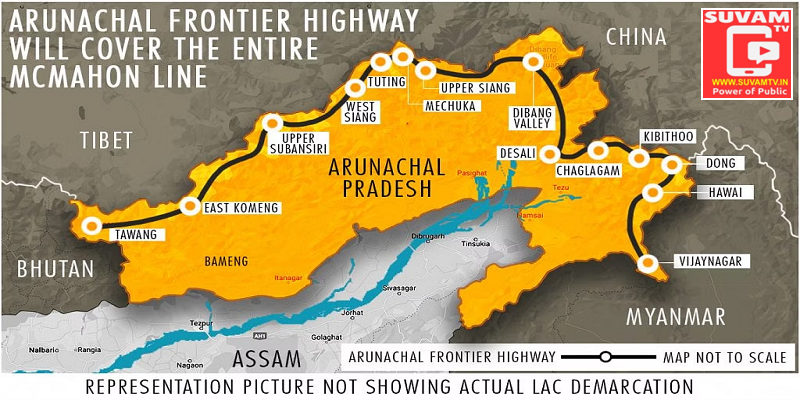- PM Narendra Modi has been given more priority in state elections.
- Praise is the expressions of approval or admirations.
- Water is life, reservoirs are needed to store rainwater.
- Europe is increasingly dependent on India for diesel.
- The historic Bali Yatra of Cuttack begins today.
- BJP and Congress have claimed to form their own governments.
- The 5-match T20 series between India and Australia has started.
- Efforts to rescue 41 workers trapped in a collapsed Tunnel.
- According to Chanakya, there are things you are working on now.
- Sahara-Sebi account money has attracted everyone’s attention.
- International Trade Fair: Odisha Pavilion is the first choice of all.
- 800 Govt Schools in Odisha will be developed into PM Shri schools.
- There is a deep connection between the brain and the heart.
- India leads the way in car buying this year.
- World Cup final match between India and Australia will be exciting!
- Cyclone Midhili is expected to make landfall in Bangladesh.
- Apartment Ownership and Management in Odisha.
- शास्त्रों के अनुसार कुछ ऐसे काम हैं जिन्हें रात के समय नहीं करना चाहिए।
- The ways to be a better person!
- Do not reheat the tea and vegetable dishes frequently.
- Deepavali is an elaborately decorated festival of lights.
- Congress leader Rahul Gandhi and BJP leader Barun Gandhi
- Recruitment of meritorious sports persons in the India posts.
- Glenn Maxwell repeated Kapil’s rare innings after 40 years.
- Offer Arua rice to the Lord Shankar and buy broom in Dhanteras.
- The Centre issued advisory to the social media intermediaries
- Bhubaneswar air is the highly polluted city in Odisha.
- Pollution in Diwali is caused by fire crackers or burning crackers.
- Centre Govt launches sale of ‘Bharat’ Atta at an MRP of ₹ 27.50/Kg.
- Swachh Diwali Shubh Diwali campaign from the 06th to 12th Nov.
- Currently Indian Rupee is very weak against US dollar
- The Vastu rules for giving and receiving donations of various items!
- Jio World Plaza is the most expansive luxury mall in India
- When the election season begins, the color of politics changes.
- Kalahandi University was renamed Manikeshwari University
- बाजार में उपलब्ध नकली लहसुन; जानें यह कैसे बनता है और इसे कैसे पहचानें
- Breeding season has begun for the rare Olive Ridley Turtle.
- Governor of Odisha, Raghubar Das arrived in Puri for Jagadarshan.
- Health Insurance policies should be available in Local Language.
- Israel and the Gaza Strip are now in a decisive war!
- Have you kept the same wallet for many years?
- Good films have no place in Odisha, Producer of ‘Mind Game’ says.
- गुलाबी शहर जयपुर सफलतापूर्वक अपने पुराने विश्व आकर्षण को बरकरार रखता है।
- Why is there a proverb, ‘Ap Ruchi Khana, Par Ruchi Pehana’
- Recovery of Kalinga Studio will not be beneficial to the film industry
- When someone dies, his soul continues to exist in this World.
- Israel has demanded the immediate resignation of UN chief.
- Ragging started in the Greek Olympics in the 8th century
- The family members carried the body on their shoulders
- Set up and use Multiple WhatsApp accounts on the same Device.
- Durga Puja is a beautiful representation of Indian culture.
- Shri Piyush Goyal Launches Website of “Kasturi Cotton Bharat”
- बंदे भारत एक्सप्रेस पूरे भारत में सबसे अधिक मांग वाली ट्रेन बन गई है
- Do you drink water immediately after eating?
- Religion is the oxygen of the soul, Life is impossible without Religion
- RRTS, A significant enhancement to India’s transportation infrastructure!
- फिल्म इंडस्ट्री में कास्टिंग काउच एक आम बात- रूपाली गांगुली
- Bus service has stopped in Odisha due to Private Bus Strike
- ज्योतिष और वास्तु शास्त्रों के अनुसार हर पहलू का विशेष महत्व होता है
- गाजा अस्पताल पर हमला 500 लोगों की मौत, बिडेन की बैठक रद्द
- The President of India, presents the 69th National Film Awards
- The Law is not for Man, but the Law is for Man
- Airports Authority of India (AAI) Recruitment 2023
- “Meri Maati Mera Desh ” campaign is entering its Last Phase
- There are Wars over Land, Property and Religion
- ‘Viksit Bharat @ 2047′ Sky is not the limit for India’s Space Journey
- Times are changing, Many pictures of the Village have been lost
- The Israeli army plans to invade the Gaza Strip
- An inspiring story about the Poor Peoples.
- Cauliflower and Curd Rice is very beneficial for good Health
- Malkangiri is the Launch Pad of Odisha’s Development
- Corruption: is a Dishonest Practice or Act
- The Odisha High Court has laid emphasis on strict compliance with the provisions of the Notary Act and Regulations.
- Cricket World Cup 2023, A test of Captain’s Luck
- India and Saudi Arabia agree to invest in renewable energy
- Education in English language has sacrificed the heritage of many languages in our country
- Never bite your nails and keep the kitchen clean; Maa Lakshmi gets angry.
- NHAI has issued SoP to safeguard of Toll Plaza Operators
- A good Investment of Opportunity and The Fortune of Death
- Dance Bars crossing the Border: Dancing, Partying till late Night
- Australian cricket team jersey and the Cricket World Cup 2023
- Nation Celebrating the 92nd Indian Air Force (IAF) Day
- It is believed that bringing these things home on Navratri brings good luck…
- Earthquake in Afghanistan and Israel launched Operation Iron Swords
- Workshop on Women Entrepreneurship Platform by NITI Aayog
- The Earth, Sun and the Sky are part of the Universe
- Union Home Minister Amit Shah reviewed Naxal-affected states, Odisha demands dedicated helicopter
- Bhubaneswar is an ancient city in India’s eastern state of Odisha
- India-Brazil Trade Monitoring Mechanism (TMM) Meeting
- Army Hospital (R&R) creates history in Cochlear Implants
- PM Shri Narendra Modi visit Chhattisgarh and Telangana
- A potential State for Tourists of various interests is Odisha
- 4 अक्टूबर से नई दिल्ली में PATA Travel Mart 2023 की 46वें संस्करण
- The Useful, Harmful and Social Insects in the World
- Birds are our Feathered Friends, We should not Harm Birds
- Basic About the Hardware and Software and its Functions
- What is the difference between Internet and Intranet?
- The PM Rozgar Mela distributed 51k Appointment Letters
- Identify the various keys and use of specific keys on the keyboard
- The Consumer Protection Act to protect the Consumers Rights
- Indian Festivals are a true Reflection of the Cultural and Religious Diversity.
- What is Insurance & Nationalisation of Life Insurance in India
- Shortcut Keys of Microsoft Windows and basic about WordPad
- Congratulations to all Indians for the Women’s Reservation Bill
- Recruitment to the post Radiographers in various district of Odisha
- More about Computer and its Features
- History of Typewriter and its Evolution
- “Bhitarkanika” is India’s second largest Mangrove Ecosystem.
- The official notification for SBI PO Recruitment 2023
- Canal has been covered and turned into a personal road at Deras Dam
- Chilika Lake is a hotspot of Biodiversity and largest wintering ground for Birds
- The various protein-rich diet sources from vegetarian foods
- BCCI has announced squad for World Cup, Rohit Sharma lead the Men in Blue
- Teachers play a key role in building Future and Inspiring Dreams.
- PM Narendra Modi has not taken a single leave since 2014
- Sugar Industry plays a significant role in the India’s Development
- ONGC has invited applications for 2,500 Apprentice posts.
- Big Superstars Bollywood movies will be hit the theaters this year
- The State Bank of India (SBI) invited 6,160 nos of Apprentice
- History and Significance of World Coconut Day
- 5T Secretary attend marriage function by travelling in a helicopter?
- India remains the fastest-growing major Economy as China’s GDP
- Odisha Fireman Recruitment, Total Vacancy 941 Posts.
- The SSB Odisha released 1065 posts of lecturers recruitment
- Saptasajya is combines culture, spirituality and natural scenic beauty of Odisha
- 2,409 posts of Apprentice For Railway Recruitment Cell, Central Railway
- महंगाई से बड़ी राहत, रसोई गैस सिलेंडर के दाम में 200 रुपये की कटौती
- ‘Raksha Bandhan’ assurance of sisters safety and security throughout the lives
- Arunachal Pradesh has “always been” and will “always be” an integral part of India.
- The Satkosia Tiger Reserve is an ultimate biodiversity hotspot
- शनिवार के दिन शनिदेव को प्रसन्न करें, मिलेगा मनचाहा वरदान
- The Odisha Power Transmission Corporation Limited announced recruitment.
- Appointment letters to new Recruits under the PM Rozgar Mela
- Papaya Seeds a powerhouse of health benefits
- Unakoti has been shortlisted UNESCO World Heritage Site
- The Indian Oil Corporation Ltd Invites 490 Apprentice Posts
- Prime Minister Narendra Modi addressed 104th episode of ‘Mann Ki Baat’
- Visit to Kerala, top most festivities during this time
- उम्रकैद की सजा: क्या 14 साल के बाद आरोपी जेल से छूट जाएगा
- बरसात में बैंगन बन सकता है इंफेक्शन का कारण
- ISRO में पीएम मोदी, 23 August, National Space Day
- SME Operators Job opportunity at NLC India Limited
- History and Significance of Mother’s Day & Best ways to celebrate
- The Healthiest oil option for our kitchen is Coconut oil and olive oil .
- The Odisha Staff Selection Commission (OSSC) has released vacancies of pharmacists.
- लड़कियां लड़कों में क्या नोटिस करती हैं
- India is on Moon with its Chandrayaan-3
- राष्ट्रीय पार्टी का दर्जा कैसे मिलता है ?
- गुस्सा की कैसे करें कंट्रोल !
- Pregnancy is one of the most important events in a woman’s life.
- How to manage diabetes !
- Tulip Garden has entered the World Book of Records
- पश्चिम दिशा में सिर रखकर न सोएं
- घूमने-फिरने वाली जगहों मध्य प्रदेश
- Odisha Mining Corporation (OMC) Vacancies, 2023
- 7276 posts of Odisha Medical Officers Recruitment 2023
- अपने पिता की संपत्ति पर क्या अधिकार है
- खीरे का सेवन से कम होगा बढ़ा हुआ वजन !
- पुराना वाहन बेचने पर ट्रांसफर नहीं करवाए तब क्या नुकसान हो सकते हैं !
- पूर्वजों की फोटो लगाने के लिए सही दिशा
- Bhubaneswar Metro Rail project will cover 26 kms with 20 stations
- खाली पेट नींबू पानी के नुकसान
- Planning a trip to Leh?
- Hidden Gem in Uttarakhand
- Can a Joint Account Holder Prosecuted under Sec-138 NI Act ?
- Negative Thoughts से दूर रह सकते हैं
- India and the United Arab Emirates Crude oil Transaction in Rupees
- Quick ways to relax and reduce stress
- भारत की आजादी से जुड़ी 5 रोचक बातें
- अक्षय कुमार को स्वतंत्रता दिवस पर भारत की नागरिकता
- काबू में रहेगा हाई ब्लड प्रेशर
- Independence Day ‘Azadi Ka Amrit Mahotsav’ PM from Red Fort
- चांद पर जानें में पूरी दुनिया क्यों लगी है?
- कीबोर्ड की आवाज से पासवर्ड चोरी!
- जीरो एफआईआर कहीं भी दर्ज कराई जा सकती है।
- ‘जम्मू-कश्मीर’ बिना शर्त भारत में हुआ था विलय- सुप्रीम कोर्ट


